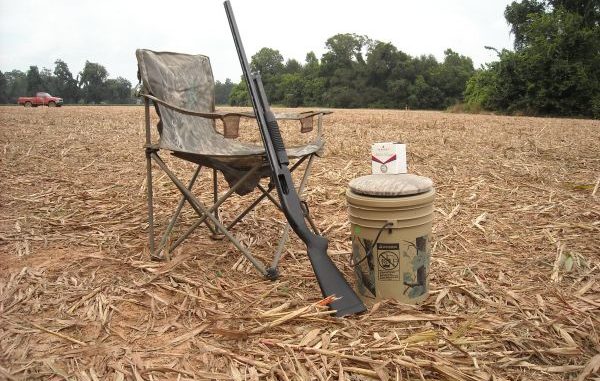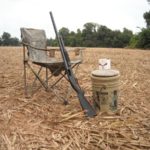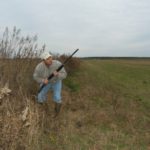
Dove season opens Saturday and you just got off the phone with your hunting buddy. He has wrangled an invitation from a farmer friend to a dove field for the two of you, and he says the field is swarming with birds.
You can’t wait for Saturday. It is the first hunting season of the fall, and nothing is more fun than shooting at the fast-moving doves as they come in to feed.
Saturday finally arrives, and you and your friend get to the field for noon. Fifteen or so other hunters also arrive and everyone gathers under some shade trees for snacks, cold drinks and conversation. The soil in the field looks like it was just plowed that morning, and the smell of the freshly turned earth confirms very recent tilling. A tractor with disc is parked nearby.
The thought crosses your mind that this seems a bit odd, but you’re no farmer and fallen birds will be easier to find on the fresh dirt.
Time passes slowly, but finally around 3 in the afternoon doves begin to fly into the field. Everyone moves out, taking up positions where they hope most of the doves will fly.
As you walk across the field to your spot, a few grains of wheat and some other seeds catch your eye.
Hmm, must have been a wheat field they let grow up in grass this summer or something.
But the bird traffic is picking up, so you dismiss the thought and hurry over to the dead tree on the fence line and hunker down. Within a few minutes the shooting picks up as small bunches of doves come diving and twisting in the wind. This is some fun! And before long you are getting close to the limit on doves.
Suddenly, several wildlife enforcement agents appear from the nearby tree line and advance onto the field. One of them approaches you. He asks for your hunting license, checks the shotgun for a plug and counts up the doves in your bag.
You’re thinking this will be over in a minute and everything is OK until he hits you with a few more questions: Did you know this field was baited? Did you ask if the field was baited or how it had been prepared? Did you look for suspicious seed or grain before beginning your hunt?
A feeling of dread settles in your stomach as the agent takes your license, gun and doves, and directs you to join the other hunters reassembling under the trees.
Once there, the agents take everyone’s information and issue citations for hunting doves over bait.
During this process you learn through whispered conversations that your buddy’s farmer friend had “prepared” this field by placing healthy quantities of wheat and bird seed on the mowed hay field repeatedly over the past few weeks. The process had been completed this morning when the farmer had directed a farmhand to run the disc over the field to turn the grain under.
You head for home with a copy of your criminal citation in hand. To complete this perfect day, you get to explain to your wife what happened.
How this all-too-real scenario could turn out and whether all participants would be prosecuted in such a case depends on a number of things.
Does the farmer accept full responsibility for placement of bait? Did the hunters know or should they have known bait was present? How much other evidence did the investigating agents gather in the case?
Our focus here is how to avoid ending up at this point in the process, so we won’t speculate further on what happens next in such common cases.
If you gain anything from reading this month’s column, it should be how to NOT end up cited for hunting doves over bait. Really, that’s not such a difficult thing.
All you need is a basic understanding of the law and sense enough not to believe interpretations of the law that come from anyone other than a wildlife enforcement officer with training and experience in migratory game bird enforcement.
First let’s go straight to the “Summary of Federal Regulations” in the “Louisiana Hunting Regulations” booklet and get the definition of baiting.
“Baiting includes placing, exposing, depositing, distributing or scattering salt, grain or other feed that could serve as a lure or attraction for migratory game birds to, on, or over areas where hunters are attempting to take them. Agricultural areas must be prepared in accordance with official recommendations to be legally hunted. It is a separate offense to place or direct placement of bait on or adjacent to an area that causes, induces or allows another to hunt by the aid of bait or over a baited area. Hunters are responsible for ensuring that an area has not been baited and should verify its legality prior to hunting.”
That paragraph covers a lot of ground in a few words. So lets break it down into the three basic things we need to know and understand in order to stay out of trouble.
First, let’s look at placement of grain or feed — always a no, no. Seed scattered on the ground that obviously was not grown there should put you in high gear and headed for the truck. I am talking about sunflower and milo seed scattered around in a harvested cornfield, a mixture of birdseed in a cow pasture or even worse, corn in a forestland cut-over. Yes, I have seen all three.
Grain grown on the field and mowed (dove only, the law is different for waterfowl) or scattered as a result of harvest is perfectly fine and is the best way to go. LDWF and the Cooperative Extension Service encourage mid-summer plantings of grains attractive to doves, with mowing or harvesting for dove season as the optimum method for good dove-hunting success.
Next, what about fall plantings of food plots or pasture lands? Doves may be hunted on areas planted to cool-season forage, but here is where the “preparation in accordance with official recommendations” comes into play.
In general Cooperative Extension Service planting recommendations include planting dates, seed rates and covering of seed sown on the field. So beware fields or pastures where wheat or other seed has been heavily or repeatedly applied to unprepared ground and left uncovered in mid to late August. Such “plantings” are much earlier than the recommended planting dates and seed rate per acre, in addition to being left exposed on the ground. Such a situation is totally out of whack with proper fall planting methods and is at best suspect and at worse, under surveillance and documentation, already deemed illegal for hunting.
Finally, when invited to hunt an unfamiliar location or field, ask how the field was prepared. And if given assurance that all is legal, go for a walk around the area before starting the hunt. Look for any seed or grain that should not be there or appears heavily applied or distributed in random piles. Be sure to kick over freshly tilled soil to see what is underneath. If anything does not look right, my advice is to leave.
I recall a case from many years ago where three other wildlife agents and I were watching a dove hunt on a heavily baited pasture. We saw a fellow and his young son exit their truck, shotguns and shell bags in hand, and approach the pasture. The man spoke to one or two of the people already on the field and took a look around. After his quick inspection he turned with the boy and headed back to the truck.
We had more than enough documentation to stop the hunt, so we announced our presence and rounded up the hunters before father and son could leave. We did a quick interview with him before sending him on his way. He said his first thought was there was no good reason for that many doves to be flocking into a mowed pasture and as soon as he took a look at the ground and saw the abundant bait, he knew it was time to go.
Smart man.




